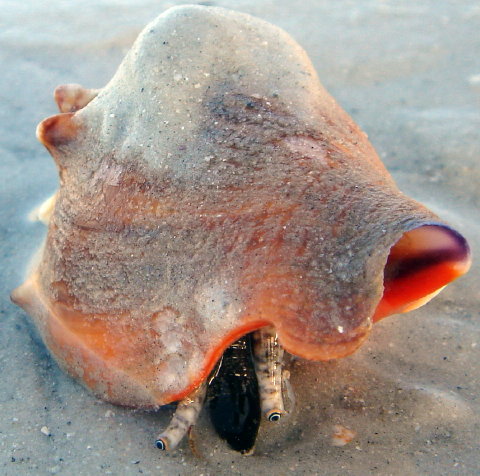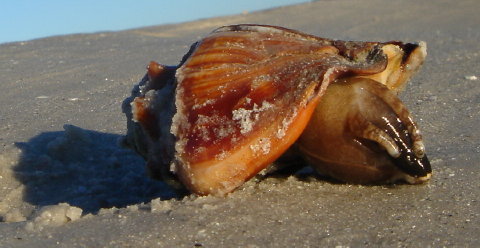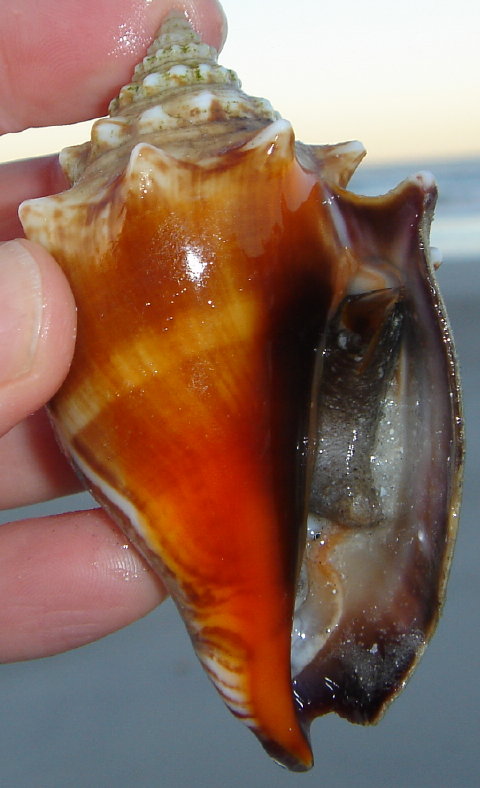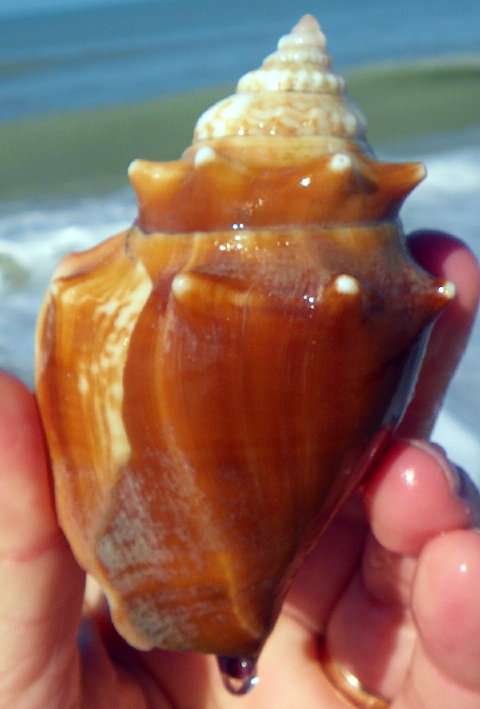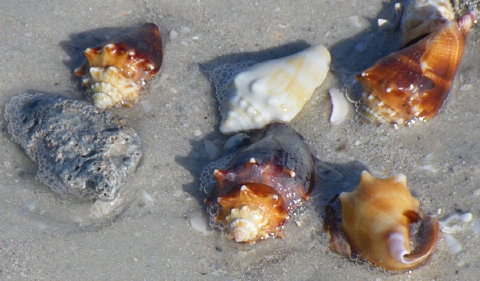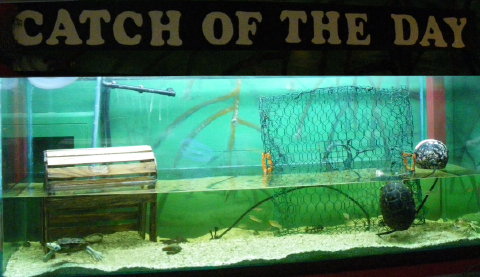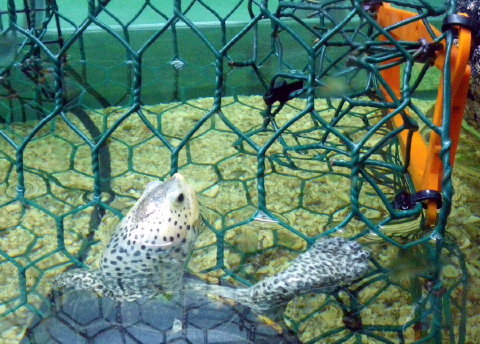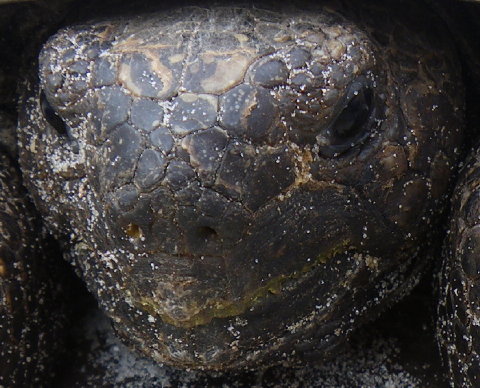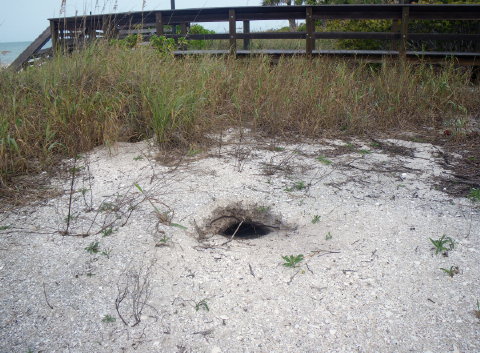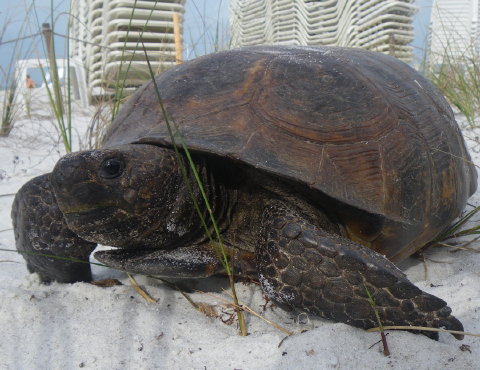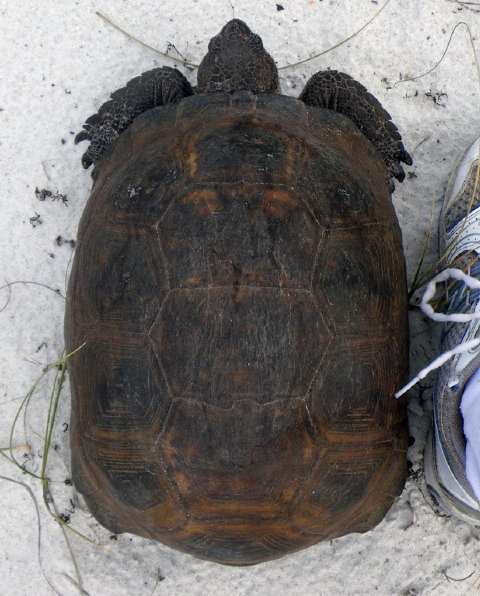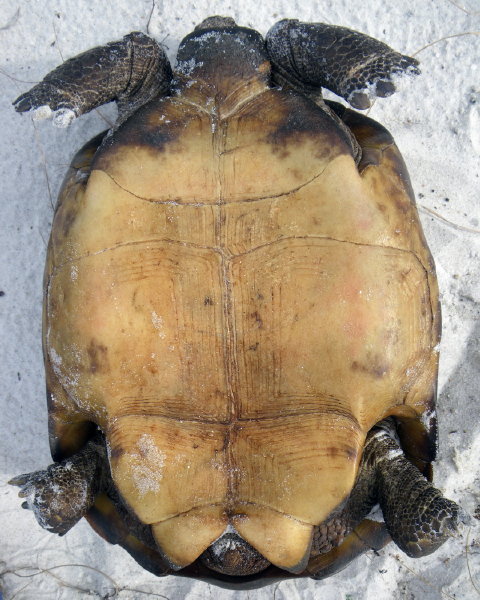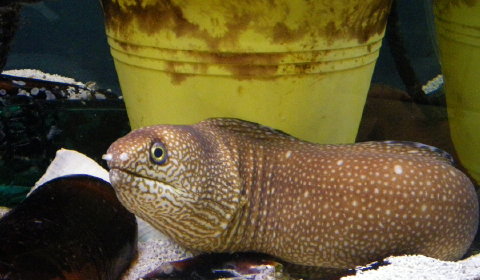Florida Fighting Conch or Extraterrestrial Alien
Wow! The Florida fighting conch (Strombus alatus) looks for all the world like a scary predator from an early Roger Corman horror movie or perhaps an alien invader from the 1960s, pre-special effects Outer Limits series. Note its bizarre sensory tentacles framing its proboscis.
Florida Fighting Conch on Vanderbilt Beach
A small-to-medium sized conch, Strombus alatus measures three-to-four inches long with a beautiful blended color pattern of light tan to deep, almost reddish brown.
Florida Fighting Conch in Surf
Conchs and whelks burrow into the sand of the surf zone and surface for foraging and other activities as the tide recedes. Turtle Journal’s Sue Wieber Nourse found this fighting conch on the falling morning tide.
Florida Fighting Conch, Spire Up, Siphon Down
The spire at the top of the Florida fighting conch tends to be lighter colored with knobs along the ridges.
Backside of Florida Fighting Conch
A backside look at shell, spire and knobs.Â
 Live Florida Fighting Conch
Fighting conchs earned their reputation with aggressive behavior in response to interference by human collectors and other annoying predators.  Luckily for Turtle Journal, Florida’s winter cold snap has mitigated this reputed fighting spirit.Â
Fighting Conchs Rise from Sand on Receding Tide
As the Turtle Journal team strolled Vanderbilt Beach this February, we encountered lots and lots of Florida fighting conchs rising from the beach sand as each tide receded.
